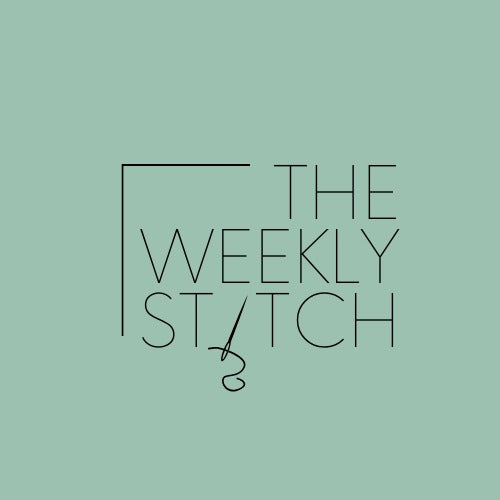Explanation of certifications & programs
The fashion world is full of tools and certifications that are designed to show how sustainable something really is. And while it’s great that more and more of these initiatives are being developed as the industry grows, it can also get a little confusing and overwhelming! That can make it tricky to know which ones you can actually trust.
The certification providers and auditors we work with are well-established and have been building transparency in the industry for years.
To give you a clearer picture, here’s a (not-so) short rundown of the main certifications we currently hold. Of course, this list isn’t exhaustive, there are plenty of other ways for a brand or factory to produce sustainable and fairly made clothing. Since we’re still a small brand, some memberships aren’t available to us yet. Still, we’re super proud of the steps we’ve taken so far and excited about the progress we’re continuing to make.
Textile Exchange | ZDHC | Reach Regulation
Higg FEM | SLCP | BSCI
Textile Exchange

Textile Exchange is a global non-profit that certifies sustainable raw materials in the fashion industry. Their certifications are widely used and trusted, and we rely on them for our organic and recycled cotton, as well as, on occasion, the recycled polyester we use.
To verify that a raw material in a clothing item meets a specific sustainability standard, a brand must provide the corresponding certificate. There are two types of certificates: scope certificates and transaction certificates. Scope certificates are issued to each facility in a supply chain that works with the material, confirming that the facility has been audited and upholds the certification's standards.
A transaction certificate, on the other hand, applies specifically to the goods in a shipment between two points in the supply chain. It verifies the transfer of certified material from one scope-certified facility to another facility, or to a brand.
For our materials, we use two certifications: the Organic Content Standard (OCS) and the Global Recycled Standard (GRS). The OCS verifies the percentage of organically grown material and tracks it from the source to the final product. There are two types of OCS certification: OCS 100 and OCS Blended. Products certified to OCS 100 contain at least 95% certified organic content, while products certified to OCS Blended contain between 5-94% certified organic content. We source materials under both certifications for different products in our collection.
In cases where products are certified under OCS Blended, they often also contain a percentage of recycled cotton or polyester. That’s where the second certification we use comes in: the Global Recycled Standard (GRS). Products certified to the GRS contain a minimum of 50% recycled material, verified at every stage of the supply chain, from the recycler to the final product.
ZDHC
ZDHC is a large industry-led initiative focused on sustainable chemical management. Its purpose is to eliminate the use of harmful chemicals in supply chains and to support factories in making more sustainable choices. One of their key tools is the Manufacturing Restricted Substances List (ZDHC MRSL), which advises production facilities on which substances are most harmful and should be banned from use. ZDHC also provides guidelines on wastewater management, including how to reduce wastewater and how it should be safely disposed of.
Facilities that use chemicals in production can also be assessed for their conformance with the ZDHC MRSL. In our case, this applies only to dyeing and chemical production facilities (such as those using washing solutions) in our supply chain. Conformance is measured on three levels (1–3), which indicate ZDHC’s level of confidence that a facility is following the MRSL guidelines.
It’s important to note that ZDHC does not provide certifications. However, membership in the program does show that a facility is actively managing its chemical use more sustainably, or is in the process of doing so.
REACH
The REACH regulation was created by the European Union and applies to all products containing chemicals that are bought, sold, or imported into the EU. Its purpose is to protect the European market from harmful chemicals entering from other regions and to ensure that even products produced outside the EU must still comply with EU regulations when sold within the market. REACH covers the registration and use of chemicals, hazard assessments, and the production of chemicals with a strong focus on reducing animal testing.
The scope of REACH is broad. Even though our production facilities are located outside the European Union, Honest Basics is considered an importer of finished products that were made using some chemicals. What matters here is that our production facilities maintain a Substances of Very High Concern list (SVHC list), and that this is confirmed to comply with REACH regulations, which it does!
Higg FEM
Higg FEM (Facility Environmental Module) is a measurement tool used to assess the environmental impact of manufacturing facilities. It looks at areas such as energy and water use, waste management, chemical management, and overall environmental systems. The goal is to understand a facility’s impact while also providing clear steps for improvement.
The tool works through a yearly self-assessment completed by the facility, followed by verification from an independent reviewer. The facility is then given a score. Through our close contact with production partners, we’ve found this tool to be very valuable, as it requires continuous monitoring and evaluation. This means we’re always working on reducing our environmental impact and finding ways to improve.
SLCP
The Social & Labor Convergence Program (SLCP) uses an assessment tool called the Converged Assessment Framework to evaluate working conditions in factories and provide guidance for improvement. We use this framework within the Higg module, where it’s referred to as FSLM. Similar to the Higg FEM, our factories complete a self-assessment that covers recruitment processes, working hours, wages, worker treatment and involvement, health and safety, and management systems.
These areas are scored to create an overall assessment, which the facility can then use as a guideline for improvement. Certain issues, such as child labor, forced labor, and specific types of discrimination, are considered zero-tolerance. After the self-assessment, an independent verifier reviews the report and scores the facility based on the quality of its working conditions.
BSCI
Another verification method focused on working conditions is the Amfori BSCI system. This audit methodology measures factories across 13 areas of social performance. An auditor from the organisation visits the facility and scores it based on a wide range of criteria, including social management systems, worker protection and involvement, freedom of association and collective bargaining, non-discrimination, fair remuneration, working hours, health and safety, and environmental protection.
As with other systems, there are zero-tolerance areas — specifically child labor and young workers, precarious employment, bonded labor, and human trafficking. Based on the scoring, Amfori BSCI also provides guidance to help facilities improve their working conditions going forward.









